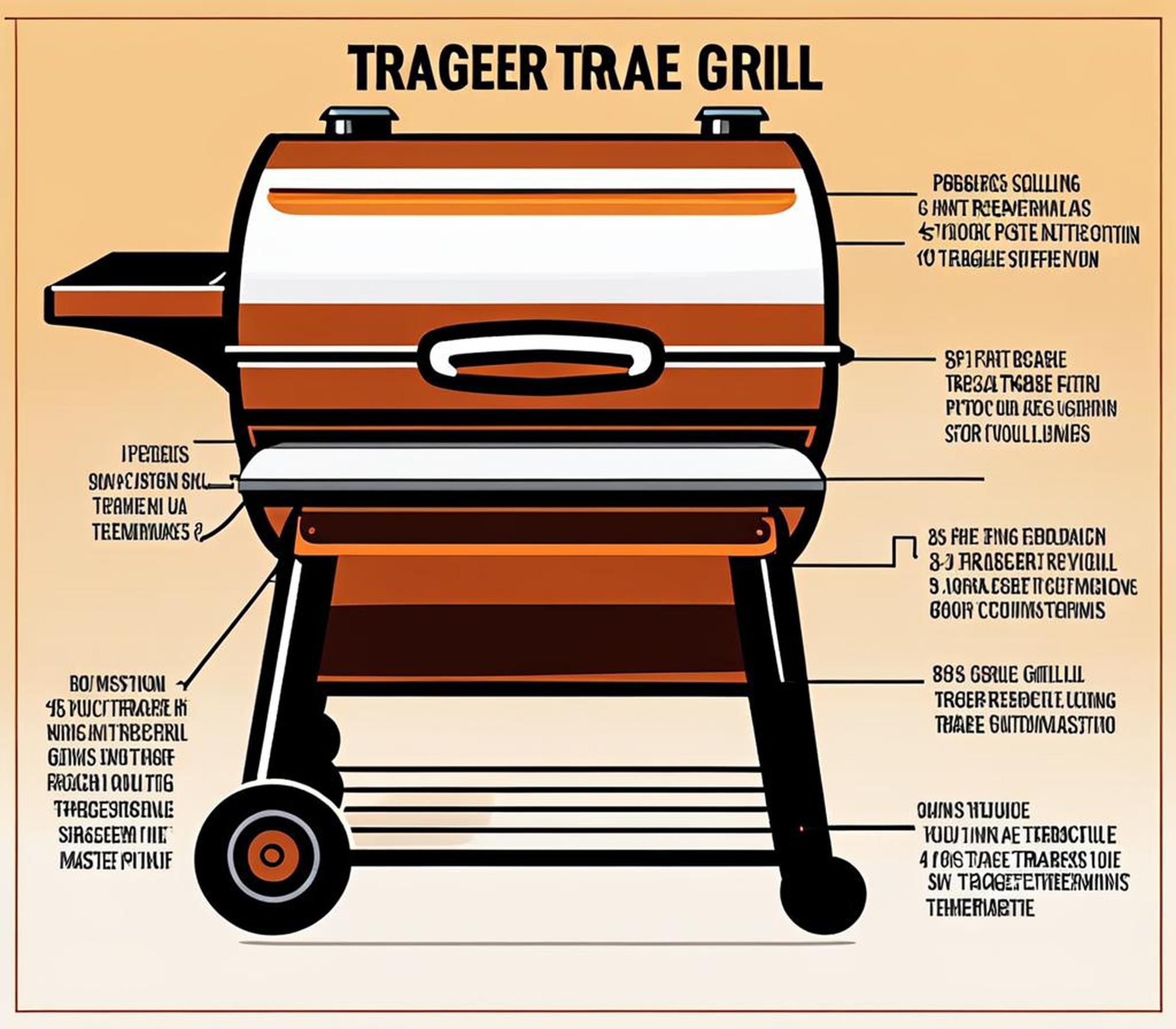Traeger grills have revolutionized backyard barbecuing with their game-changing wood pellet fuel system. But to truly master Traeger grilling and smoking, it takes learning key tips and techniques. From properly seasoning your grill to perfecting reverse sears, we’ll explore expert-level guidance for your next cookout.
We’ll breakdown Traeger mastery into clear advice on temperature regulation, meat preparation, specialty techniques, and troubleshooting common problems. You’ll soon be the talk of the neighborhood with incredibly juicy, smoky masterpieces.
Getting Started: Seasoning and Learning Your Grill
Before firing up those first chicken wings, take time to seasoning your new Traeger properly. This burn-off of factory oils helps limit any unpleasant flavors. Run the grill empty at a high temperature for at least 30 minutes, checking for hot spots by melting cheese over the grates.
Be sure to thoroughly consult your model’s manual on capacities, features, and guidance. While Traeger operation varies, most controls work the same. Start slowly with shorter cooks as you acquaint yourself with the system before attempting briskets or pork shoulders.

Achieving Perfect Preheating and Temperature Maintenance
Nailing steady, accurate temperature is essential for BBQ mastery. Before each use, preheat your Traeger with lid closed for 10-20 minutes dependent on ambient weather. Verify its readiness with an independent probe thermometer before adding food.
Monitor temps closely and adjust the auger and fan accordingly to hold steady heat, opening the lid only when absolutely necessary. If flares occur, quickly move food temporarily away.
Maximizing the Traeger’s Sear Function
While synonymous with smoking, Traeger grills can hit scorching temps exceeding 500degF. Preheating completely is key before searing via direct contact with the hot grates just a minute or two per side. This yields a crisped, flavorful crust surrounding tender and juicy meat.
Preparing Meat to Absorb Maximum Smoke
Contrary to most grilling, meat should be cold before hitting the Traeger, not left out to reach room temperature. The initial chill helps it take on more rich smoke, seeping deep into muscle fibers. As it warms gently, proteins relax versus closing up and tightening if started hot.
Most Suitable Cuts and Seasonings for Smoking
While you can smoke almost anything, ideal cuts have marbling and connective tissues. These breakdown over low and slow cooking into succulent, fall-apart texture. Avoid sugar-based rubs that may burn in spots. For poultry, poke skin so smoke permeates.
Our favorites include beef chuck ribs, pulled pork shoulders, tri-tip roasts, boneless turkey breasts, and thick pork chops.
Using Special Traeger Techniques for Superior BBQ
Executing the Tasty Reverse Sear
This method starts by gently smoking meat at 225-250degF until nearing desired doneness. Then blast over 500degF to quickly sear both sides, creating an unbeatable crust enclosing incredibly moist interior meat.
Infusing Extra Smoke into Meats
Supplementing wood pellets with soaked hickory, applewood, or mesquite chips boosts smoky essence. Strategic spritzing with broth, juice, or cider during cooking also keeps things most.
Preventing Dryness While Cooking
No one likes dried out meats. Wrapping certain cuts midway through lets them baste in their own juices. Mopping additional sauce or fat further ensures succulence.
Troubleshooting Common Traeger Problems
Mastering your grill also means quickly addressing issues when they arise.
Managing Grease Fires and Flareups
Close the lid to suffocate flames until they extinguish and regulate temperature to prevent future flareups. Have a fire extinguisher ready for when things escalate.
Overshooting or dropping temps? Adjust the auger and fan accordingly. Small adjustments make a big difference. Preheating correctly also avoids wild temp fluctuations.
We’ve covered fundamental to advanced guidance on truly excelling with your prized Traeger. From meat prep to troubleshooting problems, you now have the inside tips for incredible barbecue.
Hungry to take your skills even further? Subscribe using the link below for more mouthwatering Traeger tutorials straight to your inbox.
